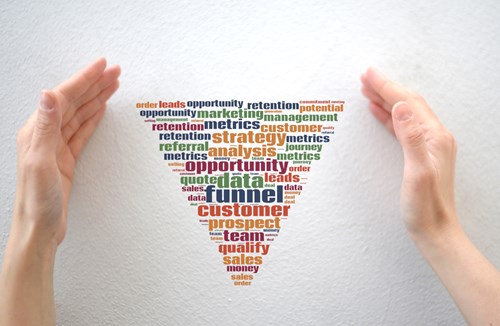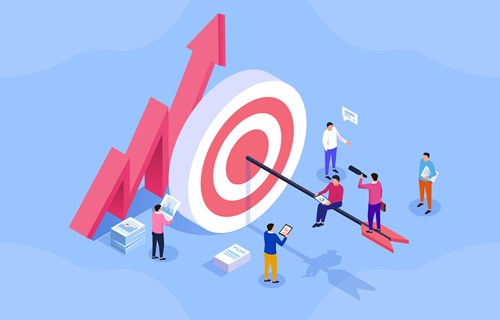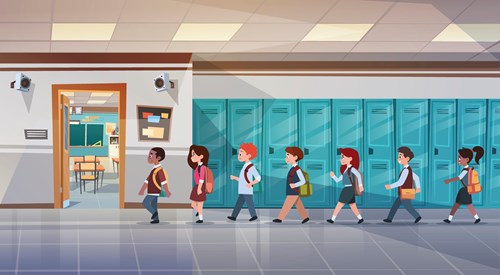The sales funnel: finding and selling to the right customers
While a big part of running a successful ELT operation is the academic management aspect, ensuring that you have a consistent flow of students and understanding where they come from is also very important. This means that it is important to understand where marketing leads come from and how they are converted into sales. In this blogpost, I evaluate at the sales funnel and its different stages and weigh up how the stages can be used effectively in your business.

The simplest description of what a sales funnel is that it is every step that a customer goes through from the moment they start learning about you and your product(s) until their actual purchase. This is different from the customer journey which looks at the journey including product delivery and loyalty. By analysing the different steps customers go through when they learn about your organisation and understanding the data that arises from the sales funnel ensures that your marketing and sales strategies remain effective. While there are many metrics and KPIs to look at in terms of analysing sales, I’ve focused on three key aspects to make it applicable to a range of managers and school owners, and so I can highlight the process and look at key indicators in each of the different stages.

1. Awareness: Marketing and leads generation
The marketing team (or person) is responsible for identifying the target markets that your marketing plan is supposed to target and how your message is communicated to them. This creates an awareness of your organisation and your products, which in turn creates leads that make contact with your organisation – this could be from saying they’re interested in studying with you or asking for more information through to placement tests, try-out/trial lessons or whatever first contact you have in place. This ties in closely with the customer journey, as the ease with which they can contact you and how you respond is critical in terms of moving them through the sales funnel.
The number of people that view your marketing (advertisements, flyers, brochures) and respond creates leads. The number of leads that end up entering your sales process (placement tests, consultations, try-out/trail lessons, etc.) shows the quality of the leads. In our organisation, all our advertisements lead to a portal where the potential customer enters their details and these details are then distributed to the appropriate sales staff members.
If 3,000 people view your advertisement and only two contact your organisation the quality of your marketing message might be problematic. I have seen this a number of times where marketing messages are written in English, with excellent persuasive language, but the translation into a local language loses the persuasive language.
Alternatively, if your 3,000 views lead to 1,000 people contacting your organization, but only twenty people register for courses, then you might be attracting the wrong people in relation to
your marketing or your sales team might be struggling to sell certain products in your organisation.
Knowing that your marketing campaign is not attracting leads allows you to analyse where in the sales funnel the problem lies. Questions to ask yourself (and the marketing team) could include:
- Is my marketing campaign targeting the right market segment? Is it in language (and a language) that appeals to them?
- Are we generating enough leads in relation to the cost of our campaign?
- Which marketing channels are most effective for different products? Is our social media presence appropriate to the consumers we are targeting?
- Are we generating enough leads in relation to the number of potential customers our campaign reaches? How could we increase this?

2. Interest: first contact
Once the potential customer has expressed interest in your organisation and approaches your organisation, they enter the sales process. In our organisation, that involves having a consultation with a sales staff member, followed by a placement test, a free lesson, or invitation to a demo lesson. A key number for us here is how many people fill in the online form and then progress to a first contact consultation. The higher the number, the stronger the quality of the leads our marketing campaigns are generating. This also indicates which of our marketing campaigns are successful and which are less successful.
Key questions to ask here could be:
- How many leads turn into first contact potentials? How can we use this number to improve our marketing campaigns, our first contact activities, and our sales training?
- What is the potential customer’s first contact experience and how can we ensure that their needs are addressed and met? How could this be improved?
- How well linked is the marketing message and what customers are being sold? How well is this message related to our actual product delivery?

3. Decision: Second and third contact
Once there has been first contact and a consultation, the customer then makes a decision to purchase, request more information, or not to purchase. These three options once again give us data to analyse and streamline the process to maximise the effectiveness of the sales funnel. While the sales process doesn’t end here, and the opportunity for upselling, registration for further products, and turning a customer into a loyal customer or advocate, all of these relate more the customer journey than to the actual sales funnel.
Key questions could be:
- How many first contact decision customers purchase and how could this number be improved?
- How many customers request more information and what information are they requesting? Could we include this information in customer and sales packs and would including this information make the sales packs too dense or contribute to the sales process?
- How many customers decide not to purchase and what are their main reasons for not to purchase? An example here might be price related, where it becomes critically important to focus on value for money and competitive advantage, for example.

Looking forward
Understanding the sales funnel and how it narrows down from people exposed to your marketing campaigns, to people who contact your organisation, to potential customers that experience first contact, to finally, customers who purchase from you allows you to analyse where the strengths and weaknesses in your sales funnel are. This, in turn, allows you to improve and strengthen your marketing campaigns and sales processes and ensures a consistent flow of qualified leads turning into customers.


Comments
Write a Comment
Comment Submitted